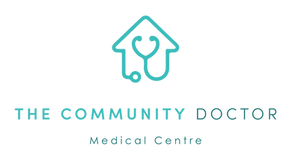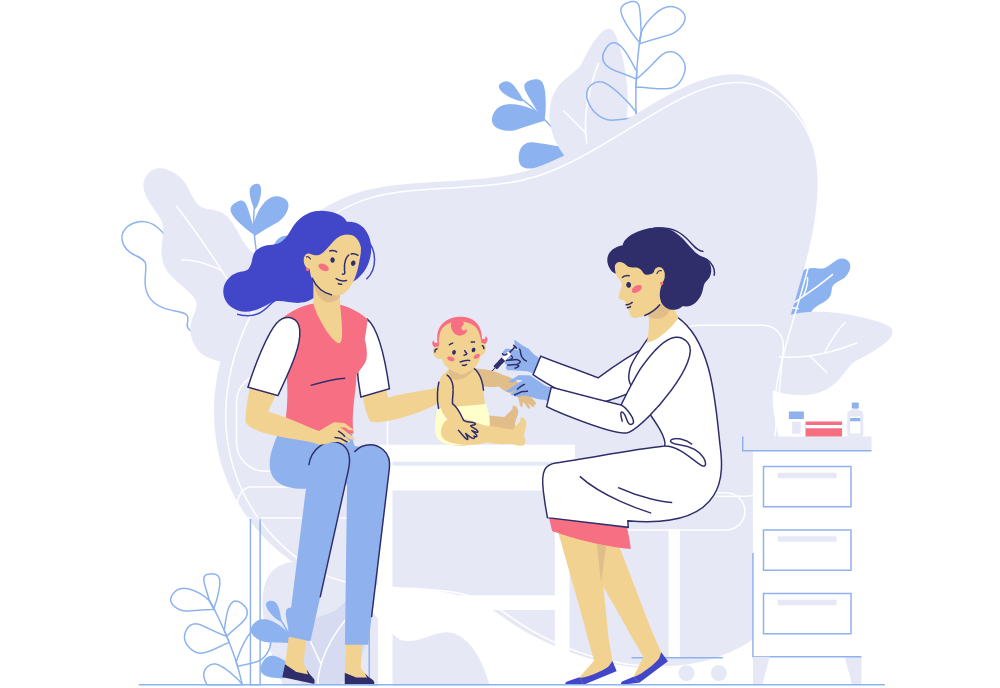Did you know? Chronic pain affects around 3.6 million Australians with many, unfortunately, going unreported and untreated.
But they don’t have to.
With the 24th to the 30th of July being National Pain Week in Australia, the health experts at The Community Doctor made it their mission to explain chronic pain with the hope of raising awareness and education around this common problem.
We find out:
- What is chronic pain?
- Who is at risk of chronic pain?
- The warning signs of chronic pain
- The causes of chronic pain
- Chronic pain treatments
So, what is chronic pain exactly?
Firstly, when we say ”pain” in this article, we’re referring to physical pain, not emotional pain regarding mental health.
We all know what physical pain is, so that’s an easy one.
Chronic pain typically means physical pain that lasts for more than 3 months or beyond normal healing time.
This is different from the usual acute physical pain we’ve all felt from, say, falling over. In most cases, you’d expect this type of acute pain not to last too long.
Chronic pain lasts much longer and can affect people in different ways with very different levels of severity. It can even fade in and out too, being described as ‘coming back’ at certain times for example.
Chronic pain is often a result of an underlying medical condition or injury, but in some cases, it can also occur without any obvious cause.
Unlike acute pain, chronic pain persists beyond the normal healing time and may not have a clear biological purpose.
Chronic pain can affect various parts of the body, including muscles, joints, nerves, and organs, leading to physical discomfort, reduced mobility, and emotional distress.
It’s a complex condition that can have a significant impact on a person’s daily life.
Who is at risk of chronic pain?
There can be several factors that contribute to the risk of developing chronic pain, and it can affect people of all ages and backgrounds.
Medical conditions
Individuals with certain medical conditions are at a higher risk of developing chronic pain.
Conditions such as arthritis, fibromyalgia, back or neck problems, nerve damage (neuropathy), migraines, and autoimmune disorders can contribute to persistent pain.
These conditions often involve inflammation, nerve sensitivity, or structural abnormalities that can lead to ongoing discomfort.
People who have undergone surgery or experienced traumatic injuries may also be at a higher risk of developing chronic pain due to tissue damage and nerve injury.
Psychological factors
Psychological factors such as depression, anxiety, and high levels of stress can increase the vulnerability to chronic pain.
These conditions can alter the way the brain processes pain signals and amplifies the perception of pain.
People facing socio-economic challenges, such as low-income levels, limited access to healthcare, or lack of social support, may be at an increased risk of chronic pain.
These situations can make it harder to manage and recover from underlying conditions or injuries.
Chronic pain is a complex condition, and there are many risk factors. As such, chronic pain can vary, and a comprehensive assessment is important when evaluating the risk of chronic pain.
If you feel that you might be suffering from chronic pain, or pain or any kind, get in touch with our team today.

The warning signs of chronic pain
There are several typical warning signs of chronic pain, but remember that as it’s a complex condition that affects people in different ways, these are only general.
Difficulty sleeping
Chronic pain often disrupts sleep patterns, making it difficult to fall asleep and stay asleep.
This can mean waking up during the night with pain for example.
Emotional impact
Chronic pain can have a profound emotional and psychological impact resulting from the physical pain.
It may lead to feelings of frustration, irritability, depression, anxiety, or social withdrawal.
Persistence
Chronic pain typically lasts beyond the expected healing time of an injury or medical condition.
If you experience pain that lasts for three to six months or longer, it may be an indication of chronic pain.
Long-term pain is a key warning sign of chronic pain.
Recurrence
Chronic pain often recurs, goes up and down in severity or comes and goes over time.
It may have periods of increased intensity followed by periods of relative relief, but the pain never completely goes away.
Intensity
Chronic pain can be severe and debilitating, significantly affecting your ability to perform daily activities and impacting your quality of life.
It may be described as aching, burning, throbbing, or shooting.
Daily life limitations
Chronic pain can restrict mobility and limit your ability to perform everyday tasks, such as walking, standing, or lifting objects. It may also interfere with work, hobbies, and social interactions.
Location
Chronic pain can affect specific areas of the body, such as the lower back, neck, joints, or muscles.
It can also be widespread, involving multiple areas of the body simultaneously.
This again makes chronic pain a challenging condition.
Lack of response to treatment
If you have been receiving treatment for a medical condition or injury, but the pain won’t go away or it returns despite the treatment, it could be an indication of chronic pain.
If you’re experiencing any of these warning signs, there’s no need to go it alone. Get in touch with us for a consultation with an experienced healthcare professional.
The causes of chronic pain
As we mentioned above, determining the exact cause of chronic pain can be difficult to pinpoint. This is for a few reasons:
- People can have multiple causes
- Symptoms of chronic pain can begin a long time after an event
- Chronic pain can be caused by other health conditions
Nonetheless, here are some common, but general, causes:
Lifestyle and environmental choices
As with many health conditions, certain lifestyle choices, such as poor posture, lack of exercise, obesity, and an unhealthy diet, can contribute to chronic pain.
Environmental factors, such as exposure to repetitive motions, vibrations, or physical strain, can also play a role.
Injuries and trauma
Past injuries or trauma, such as fractures, surgeries, or accidents, can lead to chronic pain.
Tissue damage, nerve injury, or the formation of scar tissue can cause persistent pain long after the initial injury has healed.
This is a common cause of chronic pain in many people.
Nervous system abnormalities
Conditions that affect the central nervous system, such as complex regional pain syndrome (CRPS), can result in chronic pain.
Nerve abnormalities or malfunctioning pain signals can lead to persistent pain signals being transmitted to the brain.
Underlying medical conditions
Chronic pain often stems from underlying medical conditions such as arthritis, fibromyalgia, multiple sclerosis, endometriosis, migraines, neuropathy, and inflammatory bowel disease.
These conditions can involve persistent inflammation, nerve damage, or structural abnormalities that result in ongoing pain.
Psychological factors
Emotional and psychological factors can be a cause of chronic pain. Conditions like depression, anxiety, stress, and post-traumatic stress disorder (PTSD) can amplify the perception of pain and make it more challenging to manage.
Unknown causes
In some cases, chronic pain may not have a clear cause, which is known as idiopathic pain.
It can be frustrating for individuals as there may not be a specific medical condition or injury to explain the pain, making diagnosis and treatment more challenging.
Chronic pain treatments
There are many treatment approaches available when it comes to managing chronic pain.
Here are some common treatment options:
Medication
Over-the-counter pain relievers can provide relief for mild to moderate pain.
For more severe pain, prescription medications may be prescribed.
It is important to use medications under the guidance of a healthcare professional to minimise the risk of side effects and dependency.
Support groups
Although this form of treatment isn’t a medically administered option, joining support groups or seeking counselling can provide a huge amount of support and a platform for sharing experiences with others who are also dealing with chronic pain.
It can offer coping strategies, validation, and a sense of community.
Physical therapy
Physical therapy involves exercises, stretches, and other therapeutic techniques aimed at improving strength, flexibility, and function while reducing pain.
Physical therapists can customise a treatment plan to address specific areas of pain and help improve mobility and quality of life.
Intervention procedures
Invasive procedures may be considered for chronic pain management when other treatments are ineffective.
Examples include nerve blocks, steroid injections, spinal cord stimulation, and implantable devices that deliver medication to block pain signals.
Alternative therapy
Many people find relief from chronic pain through complementary and alternative therapies, which can include acupuncture, massage therapy, chiropractic care, mindfulness meditation, relaxation techniques and other herbal remedies.
These approaches focus on managing pain through holistic and non-pharmacological means.
Lifestyle changes
The old classic; making healthier lifestyle changes can help manage chronic pain.
This can include a healthy diet, regular exercise, weight management, improving sleep, stress reduction techniques, and avoiding activities that worsen pain.
Chronic pain in review
Chronic pain is something that affects a massive number of people and a massive number of ways.
From a “bad back” and achy arms to debilitating pain that seriously impacts a person’s way of life, chronic pain does have one common denominator:
Seeking professional medical advice is always the best option.
Medical treatment plans find paths to relief based on individual circumstances which can mean faster and more effective options.
If you’re suffering from persistent pain, help is available. Talk to our team today.



